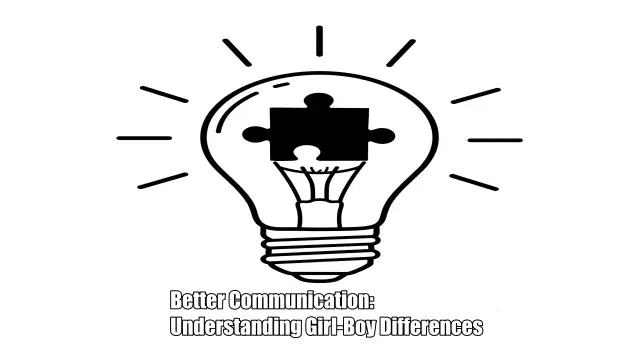Why Understanding Between Genders Can Feel Like Another Language
Ever found yourself utterly baffled by the opposite sex? Like, you’re speaking English, but somehow the message is getting lost in translation somewhere over the gender divide? You’re not alone. For ages, the question of why girls can never understand boys (and vice versa, let’s be honest) has been the fodder for countless jokes, arguments, and late-night talks. But is it truly an insurmountable chasm? Or are there simply some fundamental differences in how we communicate, how we process information, and maybe, just maybe, how our brains are wired? Let’s dive in, shall we?
The Myth of Universal Understanding: Are We Really That Different?
First things first, lets address the elephant in the room. The statement itself “girls can never understand boys” is a massive generalization, isn’t it? I mean, are we really suggesting that every single female on this planet is incapable of grasping the inner workings of every single male? Of course not! That would be ridiculous. However, the persistence of this idea suggests there’s something there, a kernel of truth perhaps, that makes cross-gender understanding feel like navigating a particularly tricky maze.

Could it be rooted in societal expectations? For centuries, boys and girls have been raised with different sets of rules, different expectations for behavior, and even different ways of expressing themselves. Boys are often encouraged to be stoic, to “man up,” and to suppress their emotions. Girls, on the other hand, are often socialized to be more emotionally expressive, nurturing, and focused on relationships. Doesn’t it stand to reason that these differing upbringings might lead to different communication styles and priorities?
Communication Crossroads: Where the Wires Get Crossed
Think about a typical scenario. A girl might be upset about something and want to talk it through, exploring every nuance of the situation, seeking validation and emotional support. A boy, faced with the same scenario, might immediately jump into problem-solving mode, looking for a quick fix without necessarily delving into the emotional intricacies. Is either approach wrong? Not necessarily. But if these two individuals try to communicate their needs and feelings in these contrasting ways, misunderstandings are almost guaranteed, ain’t they?
It’s often said that women tend to communicate more indirectly, relying on cues, body language, and implied meanings. Men, stereotypically speaking, tend to be more direct and literal in their communication. So, when a girl hints at something hoping a boy will pick up on the subtle clues, he might completely miss the message, leaving her feeling unheard and frustrated. Has this ever happened to you? I bet it has.
Emotional Landscapes: Navigating Different Terrains
Another area where the understanding gap often widens is in the realm of emotions. While these are broad strokes, research suggests there might be some neurological differences in how men and women process and express emotions. For instance, studies have indicated that women often have more activity in brain regions associated with emotional processing. Does this mean men don’t feel emotions? Absolutely not! It might just mean they process and express them differently.
A boy might internalize his feelings, preferring to deal with them privately or through action, while a girl might be more inclined to verbalize her emotions and seek emotional connection through sharing. This difference in emotional expression can lead to misinterpretations. A girl might perceive a boy’s silence as indifference, while he might simply be processing his feelings in his own way. It’s like we’re speaking different emotional languages, isn’t it?
Beyond Biology: The Influence of Culture and Environment
Of course, it’s crucial to remember that biology isn’t the only factor at play here. Our culture, our environment, and our individual experiences all shape how we think, feel, and communicate. The rigid gender roles of the past are slowly evolving, and we’re seeing more and more fluidity in how individuals express their masculinity and femininity.
Maybe the key isn’t to focus on the idea that one gender can never understand the other, but rather to acknowledge that there are often differences in perspectives and communication styles. And understanding these potential differences is the first step towards bridging that gap.
Building Bridges: How Can We Foster Better Understanding?
So, what can we do to improve understanding between girls and boys (and men and women)? It all boils down to empathy, doesn’t it? Trying to see the world from the other person’s point of view, even if it doesn’t perfectly align with our own. Active listening is crucial – truly hearing what the other person is saying, both verbally and nonverbally, without immediately jumping to conclusions or formulating a response.
Asking clarifying questions can also be incredibly helpful. Instead of assuming you know what the other person means, take the time to ask for clarification. “So, what I’m hearing is…” or “Could you tell me more about how that made you feel?” These simple questions can prevent a whole host of misunderstandings.
And perhaps most importantly, we need to move away from these rigid gender stereotypes. Not all boys are stoic and logical, and not all girls are overly emotional and indirect. Recognizing the individuality within each person, regardless of their gender, is essential for building meaningful connections and fostering true understanding.
The Takeaway: It’s About Connection, Not Competition
Ultimately, the idea that girls can never understand boys is a harmful oversimplification. While there might be some general tendencies and differences in communication styles, the capacity for understanding exists within everyone. It requires effort, empathy, open communication, and a willingness to look beyond the stereotypes. Instead of focusing on the divide, let’s focus on building bridges of understanding, one conversation at a time. After all, isn’t connection what we’re all truly seeking?

